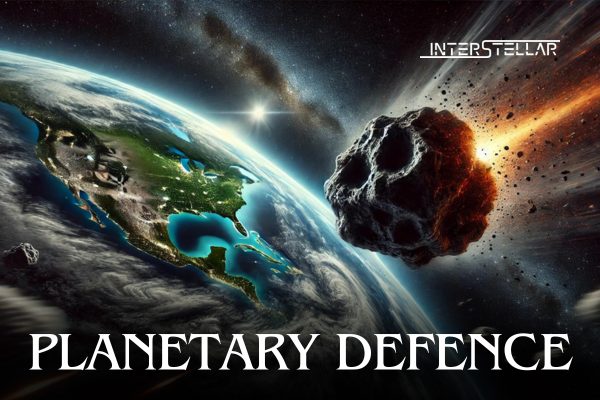Safeguarding Earth: The Real Science of Planetary Defence
From climate change and pandemics to bioterrorism and nuclear warfare, numerous threats endanger humanity. Yet, one of the biggest dangers doesn’t come from Earth itself, but from space—asteroid impacts. While often depicted as subjects of science fiction, asteroids and comets pose a real, potentially catastrophic risk. The most well-known example is the Chicxulub impact, a 10-kilometre-wide asteroid that wiped out the dinosaurs 66 million years ago. It left behind the “Crater of Doom” in the Yucatan Peninsula and caused mass extinction. The question now is: Can we prevent such an event from happening again?
Robin George Andrews explores this topic in his latest book, How to Kill an Asteroid: The Real Science of Planetary Defence. His insightful and engaging account highlights the scientists and engineers who work tirelessly to safeguard our planet from these celestial hazards.
Understanding the Threat of Asteroid Impacts
The idea of an asteroid causing a global catastrophe may seem far-fetched, but the risk is very real. While most space rocks that pass near Earth are too small to pose a serious threat, larger ones can cause significant damage. Planetary defence isn’t just a scientific curiosity—it’s a serious field that involves advanced technology and international collaboration to detect and deflect potential threats.
Robin’s book outlines the current state of planetary defence, including methods for detecting and deflecting dangerous objects. A key recent development is NASA’s Double Asteroid Redirection Test (DART), which successfully altered the orbit of the asteroid Dimorphos in 2022. This marked the first time humans changed the motion of a celestial body, setting a precedent for future planetary defence efforts.
The Science of Planetary Defence
During his research, Robin spent considerable time with the DART team and was even present at mission control during the critical impact. He describes the tension and excitement of the team as they awaited the spacecraft’s collision with Dimorphos. “DART was about punching an asteroid so hard that it reconsiders its plans,” Robin quips. This mission exemplified how science and technology can protect the planet from space hazards.
NASA’s involvement in planetary defence goes beyond DART. Future projects include the Vera C. Rubin Observatory, which will detect many potentially hazardous near-Earth objects (NEOs) once it begins operations. Additionally, NASA’s upcoming NEO Surveyor mission, set to launch in 2027, will use infrared technology to locate previously undiscovered NEOs over 140 meters in size—known as “city-killers” due to their potential to devastate entire urban areas.
ESA’s Hera Mission: Expanding on DART’s Success
While NASA’s DART mission successfully demonstrated the ability to alter an asteroid’s course, more research is needed to fully understand the implications of such impacts. The European Space Agency’s (ESA) Hera mission is designed to follow up on DART’s impact and provide detailed data. Scheduled for launch in 2024, Hera will travel to the Didymos-Dimorphos system, where it will conduct an in-depth assessment of the aftermath of DART’s collision with Dimorphos.
The Hera spacecraft, equipped with high-resolution cameras, a laser altimeter, and a pair of CubeSats, will study the resulting crater and collect data on the asteroid’s mass, shape, and internal structure. This information will help scientists refine their models of how kinetic impactors like DART can alter an asteroid’s trajectory. Hera’s findings will also contribute to designing more effective planetary defence strategies in the future.
Robin’s book emphasizes that the Hera mission, working in tandem with DART, represents a critical step in understanding and developing planetary defence techniques. It is not enough to simply deflect an asteroid; scientists must also understand the changes such impacts create, so they can plan for any unintended consequences.
Global Collaboration in Planetary Defence
Planetary defence isn’t just a US endeavour. Many countries and international organisations are working together to understand and mitigate the risk of asteroid impacts. Robin discusses the global nature of these efforts, including the role of other space agencies in Europe and around the world. The joint DART-Hera mission, known as the Asteroid Impact and Deflection Assessment (AIDA), exemplifies this collaborative approach. The partnership between NASA and ESA aims to build a comprehensive strategy for preventing catastrophic asteroid impacts.
Robin’s book also explores hypothetical scenarios of an asteroid striking a major city. He imagines Seattle being wiped off the map—not out of any dislike for the city, but to illustrate the sheer unpredictability of such events. While most disaster scenarios in media focus on New York or London, the reality is that an impact could occur anywhere on Earth.
The Road Ahead for Planetary Defence
Despite the gravity of the subject, Robin offers a hopeful message: the science and technology required to protect Earth are advancing rapidly. Initiatives like DART and Hera, along with NASA’s NEO Surveyor, represent significant progress in understanding and preventing asteroid impacts. As these projects develop, the chances of successfully deflecting or mitigating a threatening asteroid will continue to increase.
In How to Kill an Asteroid, Robin provides an in-depth look at the cutting-edge science behind planetary defence, as well as the people and organisations dedicated to ensuring our planet’s safety. His narrative combines serious science with a touch of humour, making the topic accessible and engaging for readers.


